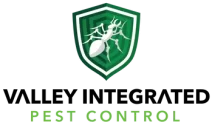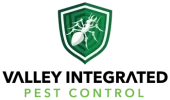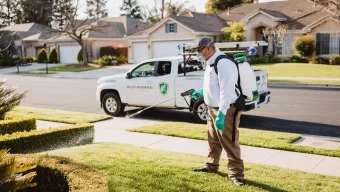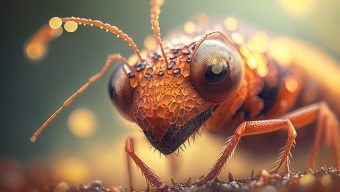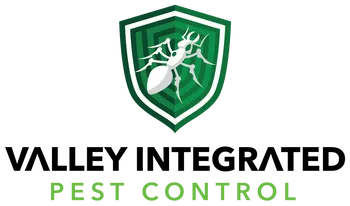Rodent Control Services in Fresno, CA
Contact us at Valley Integrated Pest Control for Fresno, CA pest control! We are ready to get you started with a detailed inspection to determine what treatments are suitable for you and your property.
FRESNO RODENT CONTROL
When it comes to Fresno rodent control, no one is better equipped to handle your problem than Valley Integrated Pest Control. You will notice that rats and mice become a much bigger problem during the winter months because they hate the cold and will try to seek out warmth and shelter in your home.

BEST RODENT CONTROL COMPANY
IN FRESNO, CA
At Valley Integrated Pest Control, our professional technicians work with you to provide you the best service possible to help exterminate rodents in your Fresno home.
Rodents can be unbearable, and when you finally discover you have an infestation, it can be hard to try and get rid of them yourself.
If you suspect you have a rat or mice infestation, call us immediately and we will come out and do a inspection on your property.
DIFFERENT SPECIES OF RODENTS IN FRESNO, CA
There are several different species of rats that are primarily found in Fresno and the Central Valley. Some of the most common rats in Fresno are kangaroo rats, roof rats, and Norway rats. Below, we will talk a little more in detail about each one to get a better understanding of them.

NORWAY RATS
The brown rat, also known as the Norway rat, is California’s most well-known and most common rats.
It is one of the largest rats having large a head and body and a slightly shorter tail. It ranges in weight from 140 to 500 g. (4.9 and 17.6 oz). With a few exceptions, the brown rat lives wherever humans do, especially in cities.
Norway rats are social animals that cluster together to build shelters. So, if there is one burrow, there are most likely several others nearby.
Every Norway rat burrow has one entrance hole and at least one bolt-hole or emergency exit, which is frequently hidden. Norway rats prefer to build their nests in fields, farmland, and inside buildings. They are nocturnal and breed quickly — Norway rats have up to six litters of rat pups per year — making it difficult to eradicate an infestation.
Visible animals, droppings, and nesting materials are all signs of Norway rat infestations. Food caches and grease trails may also be found near nesting sites.
ROOF RAT
 The black rat is a common long-tailed rodent found in the Central Valley. It is also known as the ship rat, roof rat, and house rat.
The black rat is a common long-tailed rodent found in the Central Valley. It is also known as the ship rat, roof rat, and house rat.
Black rats are omnivorous generalists. They are major pests to farmers because they consume a wide variety of agricultural crops.
Despite its name, the black rat comes in a variety of colors.
Its color ranges from black to light brown, with a lighter underside. The black rat, like the Norway rat, has a scruffy coat of black fur and is slightly smaller.
Black rats are omnivores, eating a wide variety of foods such as seeds, fruit, stems, leaves, fungi, and various invertebrates and vertebrates. They are generalists and thus do not have very specific food preferences, as evidenced by their proclivity to feed on any meal provided for cows, swine, chickens, cats, and dogs.
They eat fruits and nuts in the same way that tree squirrels do. Their diet contains a lot of water. They also are a threat to many natural habitats because they like to eat insects and small birds. Farmers don’t like these rats because they feed on a wide range of agricultural crops, including in the Central Valley, especially orange trees.
THE COMMON HOUSE MOUSE
 The house mouse has a pointed snout, small rounded ears, and a long, naked or nearly hairless tail. Despite being a wild animal, the house mouse spends most of its time with humans.
The house mouse has a pointed snout, small rounded ears, and a long, naked or nearly hairless tail. Despite being a wild animal, the house mouse spends most of its time with humans.
The house mouse has been domesticated as a pet or fancy mouse, as well as a laboratory mouse, which is an important model organism in biology and medicine.
House mice thrive in a variety of environments, including homes and commercial structures, as well as open fields and agricultural lands.
House mice are omnivorous and primarily feed on plant matter. They consume their own feces in order to obtain nutrients produced by bacteria in their intestines.
Because a female mouse can have 5 to 10 litters per year, the mouse population can grow quickly. Breeding takes place all year. This is why it’s critical to get rid of these mice as soon as they’re discovered, especially the females.
MOST COMMON QUESTIONS AND CONCERNS ABOUT RODENTS IN FRESNO
- Exclusion: The first step in rat control is to make sure they can’t get in. Seal all cracks and holes, install door sweeps, and fix any gaps in screens or vents. Keep trees and bushes trimmed away from the house, and store firewood at least 18 inches off the ground.
- Traps: There are several types of traps available, including snap traps, live traps, and glue traps. Snap traps are the most common and effective. Place traps along walls and in areas where rats are active, and bait them with peanut butter, cheese, or other high-protein foods.
- Baits: Poison baits can be effective, but they must be used carefully to avoid harming non-target animals. Place baits in secure bait stations or in areas inaccessible to pets and children.
- Sanitation: Keep food in sealed containers, clean up spills and crumbs immediately, and store garbage in sealed containers. Rats are attracted to food and shelter, so removing these attractants will make your property less appealing to them.
- Professional pest control: If you have a severe infestation, or if you are not comfortable handling the problem yourself, consider hiring a professional pest control company. They can assess your situation and develop a comprehensive rat control plan.
Remember, rat control is an ongoing process. Even after you have eliminated an infestation, you must continue to take preventative measures to keep rats from returning.
Exterminators can help you get rid of mice in your home, but it is difficult to guarantee that the mice will be permanently gone. Mice are resourceful creatures, and they can find ways to enter your home even if you have taken steps to seal all potential entry points.
An exterminator can perform a thorough inspection of your home to identify any areas where mice may be entering, and then take steps to seal those areas. They can also set traps and use bait to eliminate the mice that are already present.
Additionally, an exterminator can advise you on how to make your home less attractive to mice, such as by keeping food in sealed containers, cleaning up spills and crumbs immediately, and storing garbage in sealed containers.
However, it is important to understand that mice are persistent creatures, and it may be difficult to eliminate them permanently. Even after an exterminator has eliminated the current infestation, it is important to continue taking preventive measures to keep mice from returning.
This may include regular inspections, sealing any new entry points, and maintaining good sanitation practices in your home.
Some species of rodents can carry diseases that can be transmitted to humans, such as hantavirus and salmonella. They can also cause damage to crops, property, and infrastructure by gnawing on and burrowing into various materials. However, many species of rodents are harmless and even kept as pets.
Professionals use a variety of methods to get rid of rodents, depending on the situation and the severity of the infestation. Here are some common methods:
- Traps: Professionals use different types of traps to capture rodents, such as snap traps, glue traps, and live traps. They strategically place the traps in areas where the rodents are likely to travel and then dispose of the captured rodents.
- Poison baits: Professionals may use bait stations or poison baits to kill rodents. These baits contain chemicals that cause rodents to die after consuming them.
- Exclusion: Professionals may seal up entry points to prevent rodents from entering a building or home. They may use materials like steel wool, caulk, or mesh to seal up holes or gaps where rodents can enter.
- Habitat modification: Professionals may recommend modifying the habitat to make it less attractive to rodents. This may involve removing food sources, reducing clutter, and improving sanitation.
- Fumigation: In extreme cases, professionals may recommend fumigation to eliminate a severe infestation. This involves using chemicals to fill the space with gas and kill the rodents.
It’s important to note that using rodent control methods can be dangerous if not done properly, so it’s always best to leave it to the professionals.
There are several signs that can indicate a rodent infestation in your home or property. Here are a few common signs to look out for:
- Droppings: Rodent droppings are a sure sign of an infestation. They are often found in areas where rodents are active, such as along walls or in cabinets.
- Gnaw marks: Rodents have incisors that continue to grow throughout their lives, so they gnaw on things to keep them trimmed down. Look for gnaw marks on wood, plastic, or other materials.
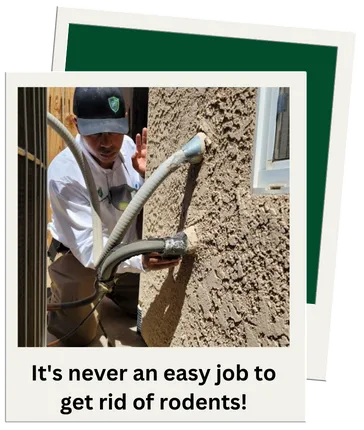
CALL VALLEY INTEGRATED PEST CONTROL FOR ALL OF YOUR RODENT CONTROL NEEDS IN FRESNO, CA! 559-307-0612
Valley Integrated Pest Control can also help you with the following pest control problems: ant control in Fresno, wasp control in Fresno, spider control in Fresno, flea and tick control in Fresno, mosquito control in Fresno, and cockroach extermination in Fresno.
Why We're the Right Choice:

We value our clients

Affordable Service Prices

Best Knowledge & Equipment in the Industry

